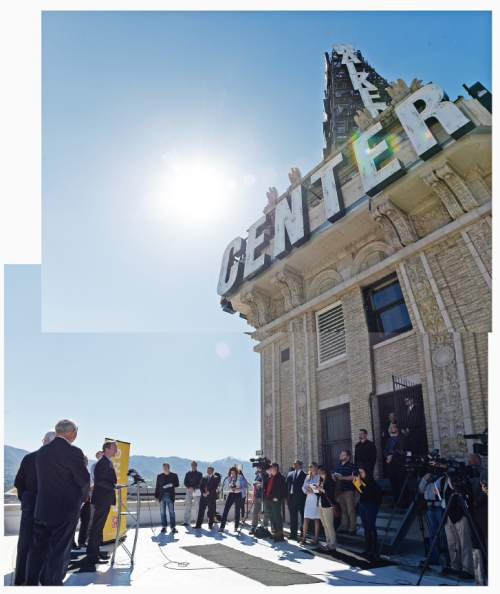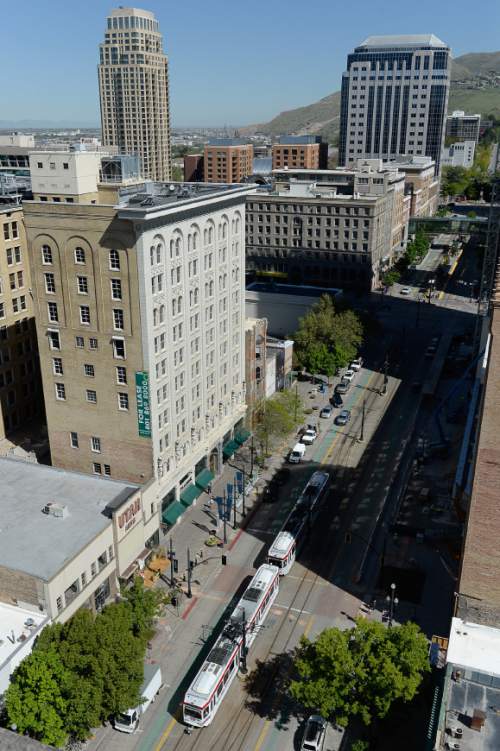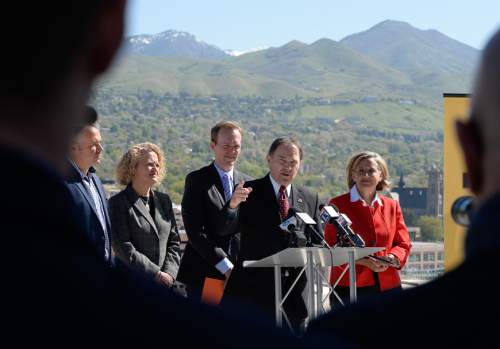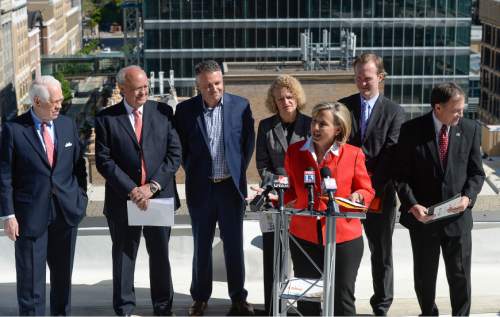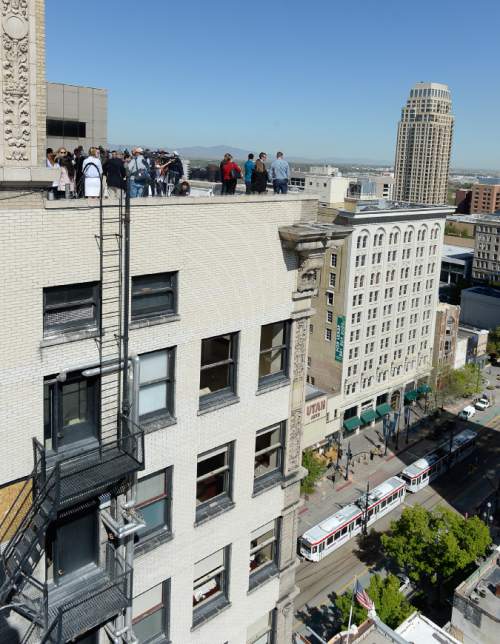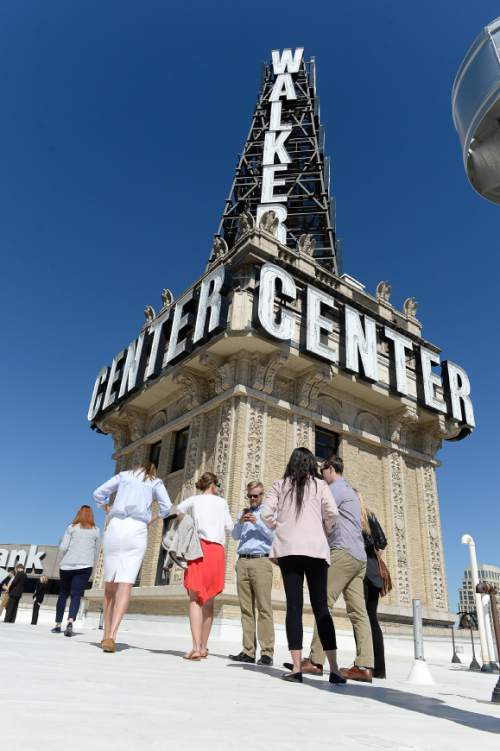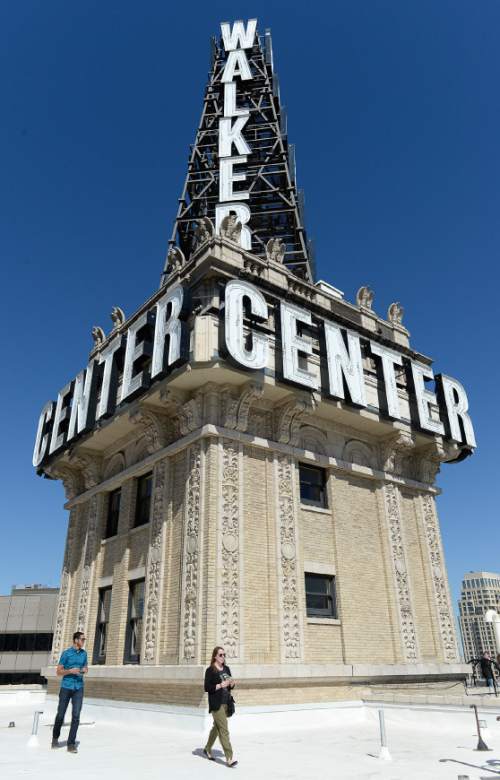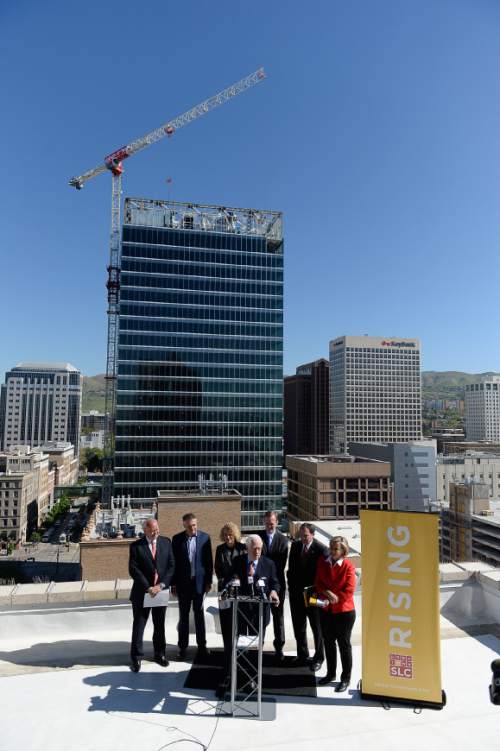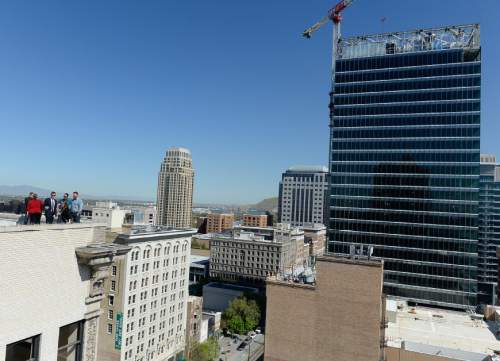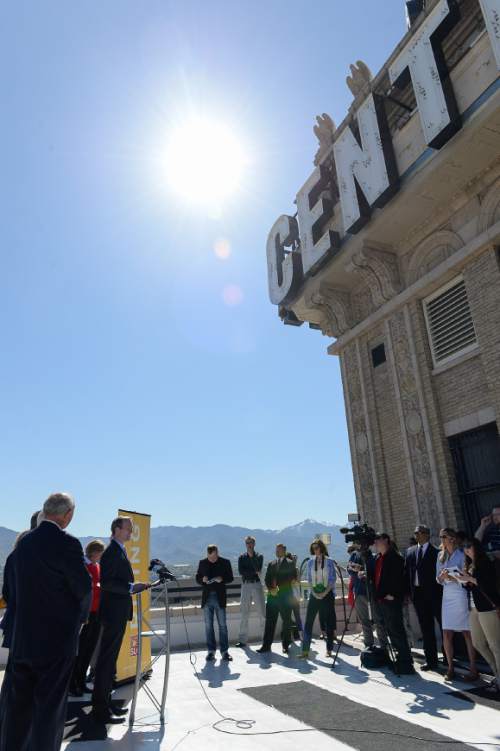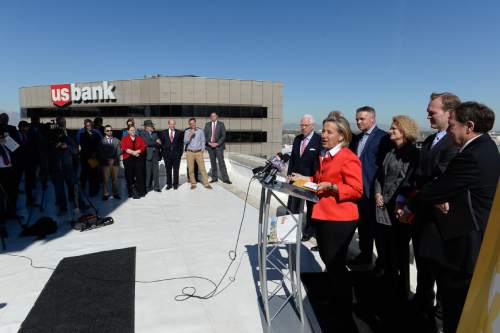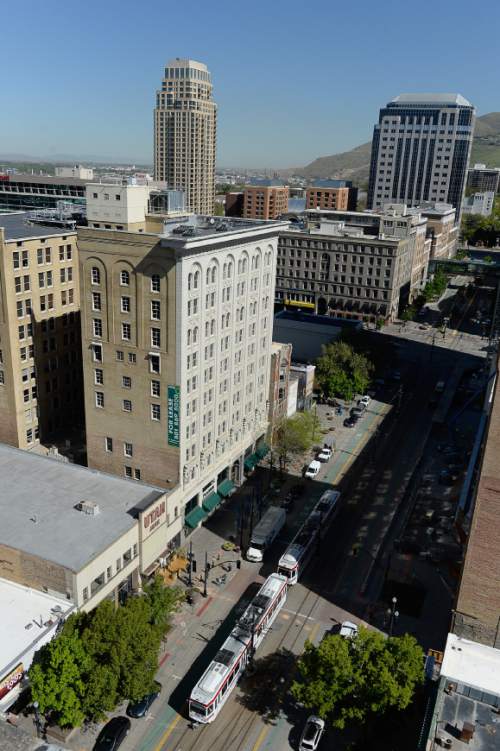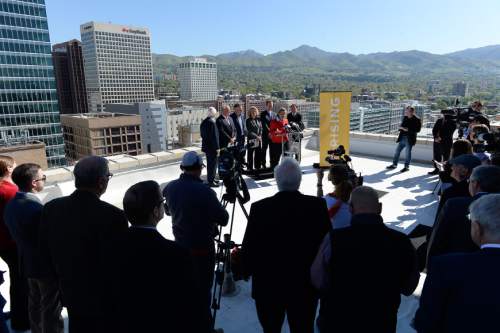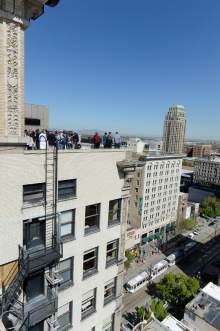This is an archived article that was published on sltrib.com in 2016, and information in the article may be outdated. It is provided only for personal research purposes and may not be reprinted.
A decade ago, road closures to improve Salt Lake City's Main Street and Interstate 15 had sapped downtown of much of its energy. Smaller retailers and two malls in the business core struggled. Boarded-up buildings scarred the streets like broken teeth in the city's smile.
"We had lost our game when it came to downtown," said Natalie Gochnour, associate dean at the University of Utah's David Eccles School of Business.
Into those headwinds, the Salt Lake Chamber launched Downtown Rising, a lobbying and marketing campaign aimed at reviving commerce and activity in the heart of Utah's capital. And the past 10 years have seen a dramatic turnaround in downtown's fortunes, thanks to crucial boosts from a healthy economy and building booms in the office and residential sectors.
Downtown is, in fact, in a development phase of historic proportions. The urban core boasts the $1.5 billion City Creek Center, several new commercial towers, light-rail lines, thousands of new apartments and stores, a growing resident population and major attractions such as the George S. and Dolores Doré Eccles Theater, set to open later this year.
"No one thought this was possible," said Lane Beattie, the chamber's president and CEO since 2003. "... But we still have much to do."
Now, Downtown Rising is rising — again. The campaign, launched in 2006 in a joint effort by the chamber and private donors, took flight again Tuesday in a jubilant gathering akin to a victory lap.
Utah Gov. Gary Herbert joined Salt Lake City Mayor Jackie Biskupski, Salt Lake County Mayor Ben McAdams, business leaders and other stakeholders in unveiling a new push for downtown development, in a made-for-TV event atop the Walker Center rooftop on Main Street.
They introduced three new priorities for the next 10 years of downtown growth: creation of a technology-oriented innovation district; continuing to add to downtown's housing options; and expanding arts, culture and sports attractions.
Tuesday's event came as the Salt Lake City Council prepares to approve a new master plan for downtown development that has been years in the making.
Above the noise of surrounding construction projects, Herbert described the business core as a crucial engine for growth in the rest of Utah, which continues to outpace the nation in producing jobs.
"You cannot have economic prosperity like we see in this state today without having a vibrant capital city here in Salt Lake," Herbert said. "For those who rolled up their sleeves and said they're going to implement the vision, we celebrate that today."
The Republican governor offered special kudos for City Creek Center, The Church of Jesus Christ of Latter-day Saints' upscale mall and residential complex that was built in the depths of the Great Recession and opened in 2012. With Mormonism's worldwide headquarters located downtown, Herbert said, the LDS Church has a vested interest.
"And they're not just talking about it," he said, "they're actually doing something about it."
Support for Salt Lake City's core transcends political boundaries, according to McAdams, who noted advances in turning it into a hub for employment, financial and technology companies, startup ventures, conventions and the hospitality industry.
"We're all in this together, throughout our metro area," McAdams said. "Our future success depends on our united efforts."
He and Biskupski, both Democrats, highlighted a need to make downtown inclusive and inviting to those of all incomes and backgrounds. The region has a reputation, McAdams said, for offering upward mobility and economic opportunity.
"But we can and we will do better," he said, "as we make wise investments in building broad-based prosperity for all of our residents."
McAdams said officials continue to work on "innovative, local solutions to overcome the shortage of affordable housing in our metro area."
Biskupski said a key element in downtown growth has been the city's response to what she called "the homeless crisis." She praised "a united front" of elected officials, service providers and business owners working to alleviate their plight, in part with a new network of shelters and added resources.
"This," Biskupski said, "is a downtown for everyone."
Twitter: @TonySemerad


